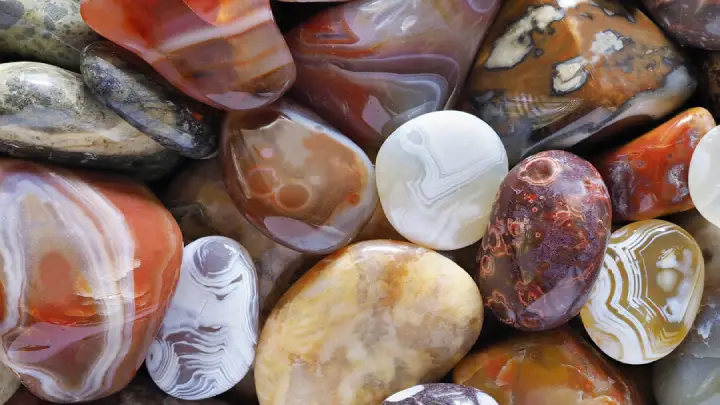Rock tumbling is a mesmerizing realm where rough, ordinary stones undergo a remarkable metamorphosis, emerging as breathtaking, polished gems. This captivating hobby using rock tumblers taps into the hidden allure within rocks, bringing forth their innate beauty. This listicle will delve into the enchanting art and science of rock tumbling, exploring how it unveils the captivating essence of these ancient treasures.
Table of Contents
Choosing the Right Rocks
Not all rocks possess the qualities necessary for successful tumbling. Discernment plays a crucial role in handpicking rocks with optimal hardness and composition. Jasper, agate, quartz, and amethyst are popular choices, boasting a rich palette of colors and patterns that ensure a diverse array of finished marvels.
The Tumbling Process
Stage 1: Rough Grinding
Embarking on the tumbling journey initiates with the introduction of coarse grit into the barrel of the rock tumbler. Within the rhythmic dance of rotation, the rocks undergo days of meticulous tumbling, slowly shedding their rough edges and morphing into smoother, more refined shapes.
Stage 2: Medium Grinding
Advancing to the second stage, finer grit assumes the role of a sculptor, delicately chiseling away any lingering imperfections. This stage represents a pivotal juncture in the transformational odyssey, honing the stones’ inherent elegance and nurturing their burgeoning radiance.
Stage 3: Fine Grinding
A delicate touch is required in the third stage, where fine grit steps into the spotlight. This stage polishes the rocks in rock tumblers with meticulous precision to a resplendent gleam, culminating in a luminosity that showcases the stones’ true potential. The duration of this stage varies, contingent upon desired levels of polish and the rocks’ unique hardness.
Stage 4: Burnishing
In the final stage, burnishing bestows an extraordinary luminescence upon the stones. This enchanting process involves adding a specialized polishing compound to the rock tumbler barrel, accentuating its inherent luster and awakening its vibrant hues. It is here that the true magic of rock tumbling reveals itself.
The Art of Rock Tumbling
Rock tumbling is a harmonious marriage of science and artistry. It calls upon patience, meticulous attention to detail, and an astute eye for aesthetics. Each stone possesses its distinct character, and the tumbling process unlocks boundless possibilities, allowing for the exploration of various shapes, colors, and patterns—a symphony of creativity waiting to unfold.
The Rewards of Rock Tumbling
Educational Benefits
Beyond its allure, rock tumbling presents an educational pathway, particularly for young enthusiasts eager to unravel the secrets of our Earth’s geological tapestry. By witnessing the metamorphosis from rough stones to polished gems, they embark on a journey of discovery, forging a deeper connection with the natural world and fostering a sense of wonder.
Creative Expression
Rock tumbling offers a fertile ground for individuals to explore their artistic impulses. The polished stones become versatile artistic mediums, lending themselves to wire wrapping, beading, and finding a place of pride within sculptures and mosaics. The possibilities for incorporating these resplendent gems into creative endeavors are boundless, limited only by the bounds of the imagination.
Conclusion:
Rock tumbling, a captivating hobby using rock tumblers and science, serves as a conduit for unearthing the hidden beauty concealed within rocks. Through the meticulous tumbling process, these unassuming stones emerge as magnificent, polished gems that captivate the senses. Whether for educational purposes or creative exploration, the magic of rock tumbling continues to enrapture enthusiasts, unveiling the extraordinary wonders concealed within nature’s timeless creations.

